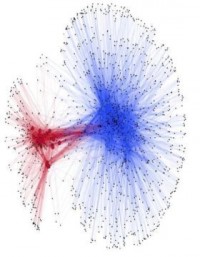Summary:In doses equivalent to those used regularly in human children, antibiotics changed the mix of gut microbes in young mice to dramatically increase their risk for type 1 diabetes.
In doses equivalent to those used regularly in human children, antibiotics changed the mix of gut microbes in young mice to dramatically increase their risk for type 1 diabetes. That is the finding of a study led by researchers from NYU Langone Medical Center, supported by the Juvenile Diabetes Research Foundation (JDRF), and published Aug. 22 in Nature Microbiology.
The study results center on the microbiome, the bacterial species in our guts that co-evolved with humans to play roles in digestion, metabolism, and immunity. As children’s exposure to microbe-killing antibiotics has increased in recent decades, the incidence of autoimmune diseases like type 1 diabetes has more than doubled. The average American child currently receives 10 courses of antibiotics by age 10.
Specifically, the new study found that short pulses of antibiotics cause mice that are susceptible to type 1 diabetes to develop the disease more quickly and more often than mice not treated with antibiotics.
“Our study begins to clarify the mechanisms by which antibiotic-driven changes in gut microbiomes may increase risk for type 1 diabetes,” says Martin Blaser, MD, The Muriel G. and George W. Singer Professor of Translational Medicine at NYU School of Medicine and the study’s senior author. “This work uses NOD mice, the best model of type 1 diabetes to date, and doses of antibiotics like those received by most children to treat common infections.”
‘This latest study result is compelling, linking the effects of use of antibiotics in mice to type 1 diabetes,” says Jessica Dunne, director of Discovery Research at JDRF. “This is the first study of its kind suggesting that antibiotic use can alter the microbiota and have lasting effects on immunological and metabolic development, resulting in autoimmunity. We’re eager to see how these findings may impact the discovery of type 1 diabetes preventive treatments in the future and continued research in the area of vaccines.”
Risk with Standard Dosage
In type 1 diabetes, the immune system mistakenly destroys the islet cells in the pancreas that produce insulin. Without insulin, patients cannot properly control their levels of blood sugar (glucose), which builds up to damage nerves and blood vessels. Some studies suggest that naturally occurring microbiomes teach newly formed immune systems to be less sensitive, and so less capable of self-attack. Antibiotics, say the study authors, may interfere with this education.
In the new study, researchers assessed the effects of antibiotic treatment on the development of microbiomes in non-obese diabetic (NOD) mice, which are known to be more susceptible to type 1 diabetes. The team examined the effects of exposure to either continuous low-dose antibiotics or pulsed antibiotic therapy (PAT), which mimics the doses used to treat many infections in children. Specifically, male NOD mice exposed to PAT were found to have twice (53 percent) the incidence of type 1 diabetes as control NOD mice (26 percent incidence) that received no antibiotics.
PAT did not significantly increase disease risk in female mice in one set of experiments, but did so in a second set of tests. Further studies are needed to clarify disease patterns by sex, and subsequent analyses in the current study were based on male mice.
To determine the effects of antibiotics, researchers collected samples of gut bacteria from all study mice. Researchers then used genomic and statistical techniques to analyze the millions of pieces of bacterial DNA in the samples. Past studies had already matched key DNA sequences to known bacterial species, enabling the team to define each mouse’s microbiome, and to capture the profound effects of antibiotics on microbial species during the first 13 weeks after birth.
Three-week-old PAT males, for instance, had a nearly complete loss in their intestines of certain bacteria shown in past studies to normally train the immune system. At all time-points in all samples, species diversity in PAT-treated microbiomes was lower than in control mice, and the composition of the bacterial communities differed greatly. Experiments that transferred gut bacteria from young mice that had been treated by antibiotics to mice lacking their own microbiomes (germ-free mice) were performed to assess whether an antibiotic-altered (perturbed) microbial population could by itself have immunological effects.
The results, which produced immunological changes resembling those seen in the microbe donors, showed that a perturbed microbial population by itself was sufficient to alter the recipient’s immune system. Along these lines, PAT mice had lower proportions of regulatory T cells known to restrain immune reactions.
More: Science





